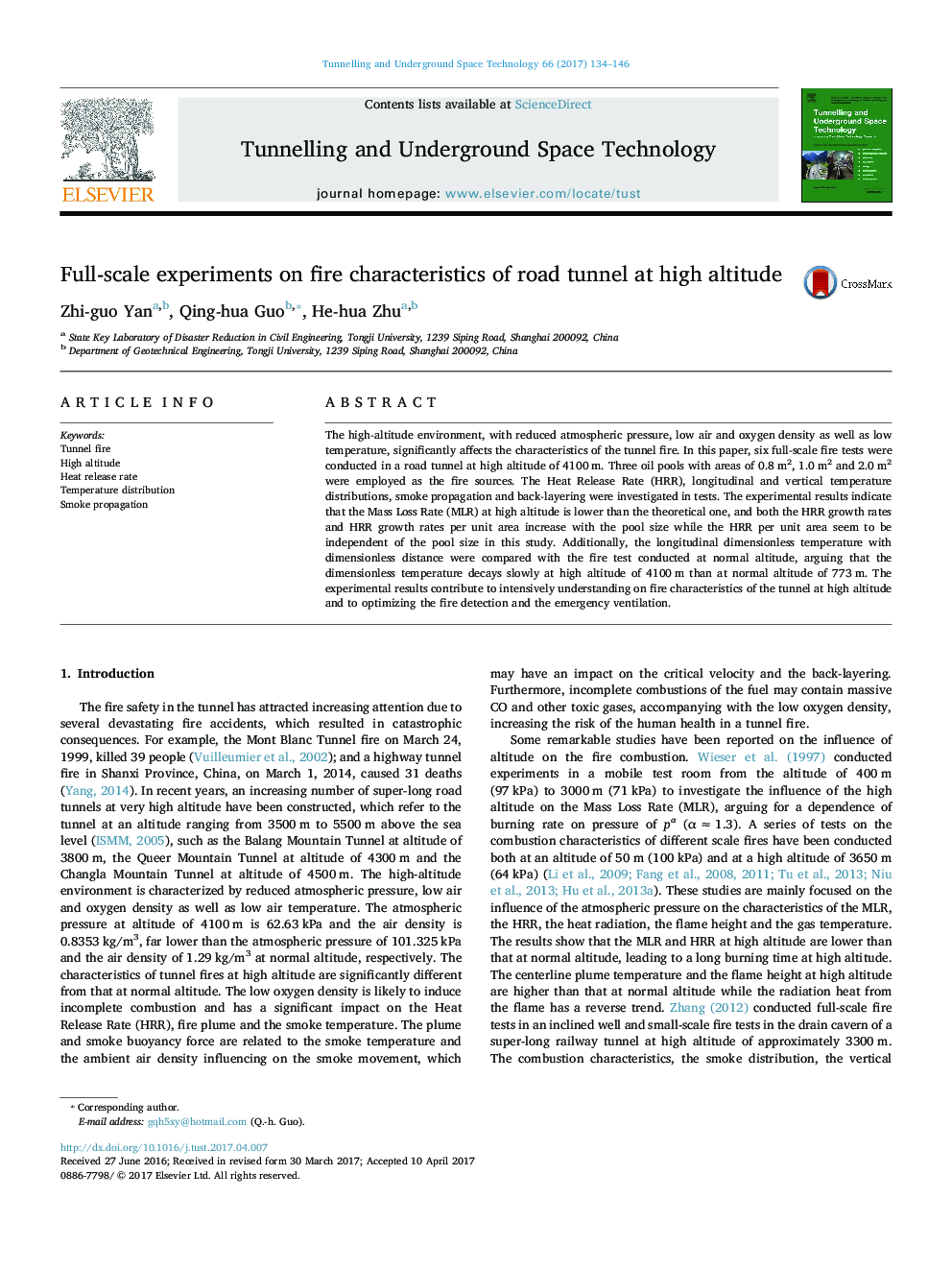| Article ID | Journal | Published Year | Pages | File Type |
|---|---|---|---|---|
| 4929336 | Tunnelling and Underground Space Technology | 2017 | 13 Pages |
Abstract
The high-altitude environment, with reduced atmospheric pressure, low air and oxygen density as well as low temperature, significantly affects the characteristics of the tunnel fire. In this paper, six full-scale fire tests were conducted in a road tunnel at high altitude of 4100Â m. Three oil pools with areas of 0.8Â m2, 1.0Â m2 and 2.0Â m2 were employed as the fire sources. The Heat Release Rate (HRR), longitudinal and vertical temperature distributions, smoke propagation and back-layering were investigated in tests. The experimental results indicate that the Mass Loss Rate (MLR) at high altitude is lower than the theoretical one, and both the HRR growth rates and HRR growth rates per unit area increase with the pool size while the HRR per unit area seem to be independent of the pool size in this study. Additionally, the longitudinal dimensionless temperature with dimensionless distance were compared with the fire test conducted at normal altitude, arguing that the dimensionless temperature decays slowly at high altitude of 4100Â m than at normal altitude of 773Â m. The experimental results contribute to intensively understanding on fire characteristics of the tunnel at high altitude and to optimizing the fire detection and the emergency ventilation.
Related Topics
Physical Sciences and Engineering
Earth and Planetary Sciences
Geotechnical Engineering and Engineering Geology
Authors
Zhi-guo Yan, Qing-hua Guo, He-hua Zhu,
